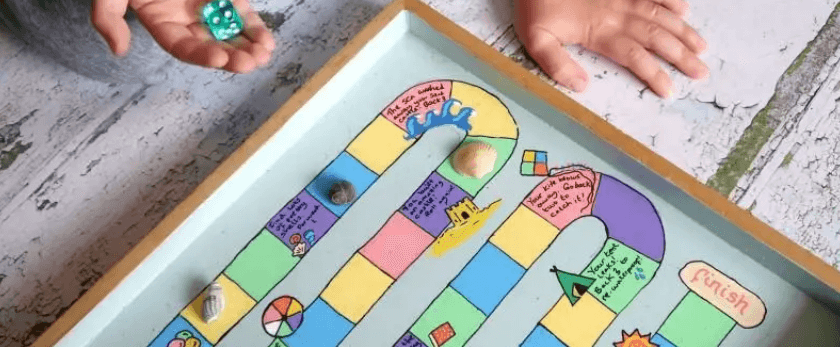Welcome to the world of homemade board games! In today's society, we are constantly bombarded with products that are harmful to the environment. From plastic packaging to toxic chemicals, it's no secret that our consumer habits are taking a toll on the planet. But fear not, there are simple and fun ways to reduce our impact and make a positive change. One of these ways is by making our own board games.
In this article, we will explore the benefits of homemade board games for the environment, what materials you will need, and step-by-step instructions on how to make your own. So gather your friends and family, and let's get started on creating a greener and more sustainable future.
Why Traditional Board Games are Bad for the Environment
Before we dive into the world of homemade board games, let's first understand why traditional board games can be harmful to the environment. Here are some of the main reasons:
-
Plastic packaging: Most board games come in plastic packaging, which is not biodegradable and can take hundreds of years to decompose. This contributes to the growing problem of plastic pollution in our oceans and landfills.
-
Toxic materials: Many traditional board games are made with materials that are harmful to the environment, such as PVC, which releases toxic chemicals when produced and disposed of.
-
Energy consumption: The production and transportation of traditional board games require a significant amount of energy, contributing to carbon emissions and climate change.
Why Making Your Own Board Games is Better for the Environment
Now that we understand the negative impact of traditional board games, let's explore why making your own is a more eco-friendly option:
-
Reduce waste: By making your own board games, you can avoid the plastic packaging and excess materials that come with store-bought games. This helps reduce waste and the amount of plastic that ends up in our landfills and oceans.
-
Use sustainable materials: When making your own board games, you have the freedom to choose sustainable materials such as recycled paper, cardboard, and natural dyes. This reduces the use of harmful materials and promotes a more circular economy.
-
Energy-efficient: Making your own board games requires less energy compared to the production and transportation of traditional games. This helps reduce carbon emissions and contributes to a more sustainable future.
What You Will Need
Now that we know the benefits of making our own board games, let's take a look at the materials you will need:
-
Recycled paper or cardboard: This will be the base for your game board and pieces. You can use old cereal boxes, cardboard boxes, or any other paper products you have at home.
-
Natural dyes: If you want to add color to your game, opt for natural dyes such as beetroot, turmeric, or spinach. These are non-toxic and biodegradable, making them a more eco-friendly option.
-
Scissors: You will need scissors to cut out your game board and pieces.
-
Glue: Use non-toxic glue to assemble your game board and pieces.
-
Markers or paint: If you want to add designs or details to your game, you can use markers or paint. Opt for non-toxic and water-based options.
-
Dice or spinner: Depending on the game you are making, you may need a dice or spinner. You can use recycled materials such as bottle caps or cardboard to make your own.
How to Make Your Own Board Game
Now that we have all the materials, let's get into the fun part – making your own board game! Here are the steps you can follow:
-
Choose a game: The first step is to choose a game that you want to make. You can either create your own game or choose a traditional game and put your own spin on it.
-
Design your game board: Using recycled paper or cardboard, draw out your game board. You can use markers or paint to add color and details. Get creative and make it unique to your game.
-
Create game pieces: Cut out game pieces from recycled paper or cardboard. You can use different shapes and sizes depending on your game. If you want to add color, use natural dyes or markers.
-
Make a spinner or dice: If your game requires a spinner or dice, you can make your own using recycled materials. For a spinner, you can use a bottle cap and a paperclip. For a dice, you can use a small cardboard box and draw dots on each side.
-
Assemble your game: Once you have all the pieces, it's time to assemble your game. Use non-toxic glue to attach the game board to a sturdy piece of cardboard. Then, glue on the game pieces and spinner or dice.
-
Play and have fun: Your homemade board game is now ready to be played! Gather your friends and family and enjoy a fun and eco-friendly game night.
Conclusion
Making your own board games is not only a fun and creative activity, but it also has a positive impact on the environment. By using sustainable materials and reducing waste, we can all play a small part in creating a more sustainable future. So next time you're looking for a new game to play, why not try making your own? Not only will you have a unique and personalized game, but you'll also be making a positive impact on the planet. Let's all do our part in creating a greener and more eco-friendly world.










